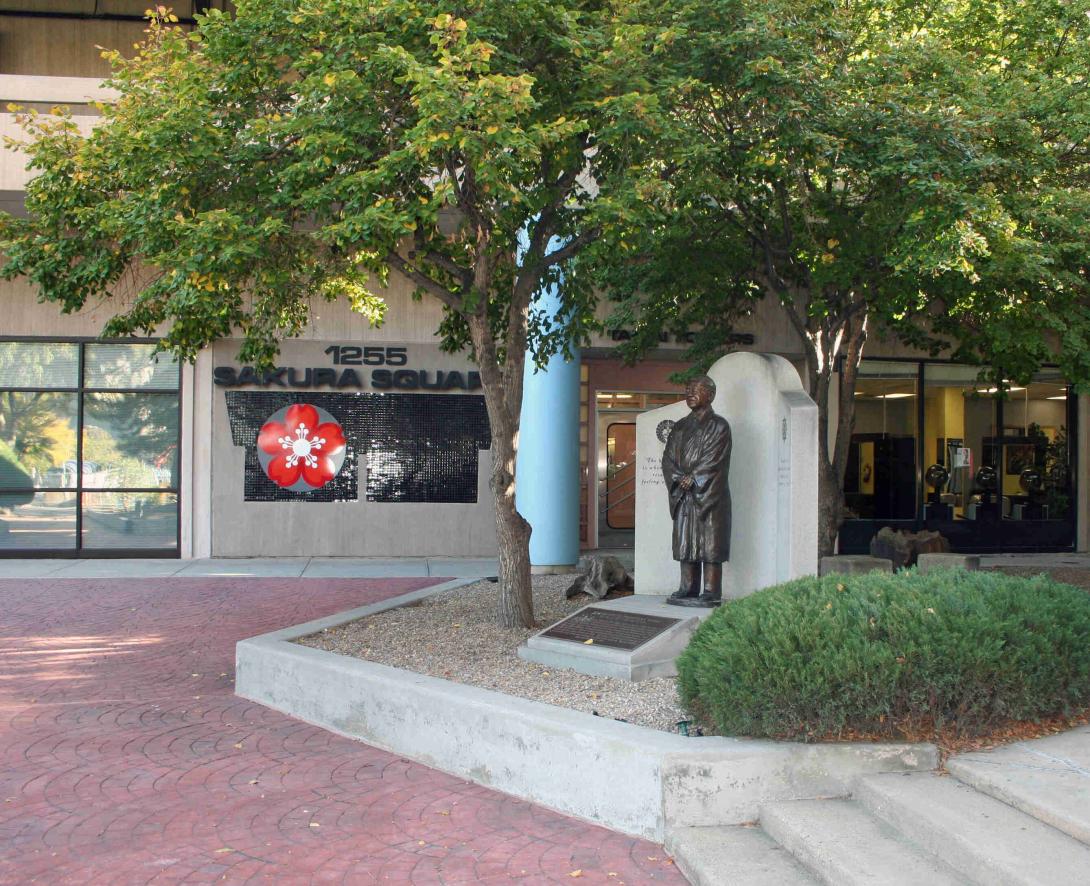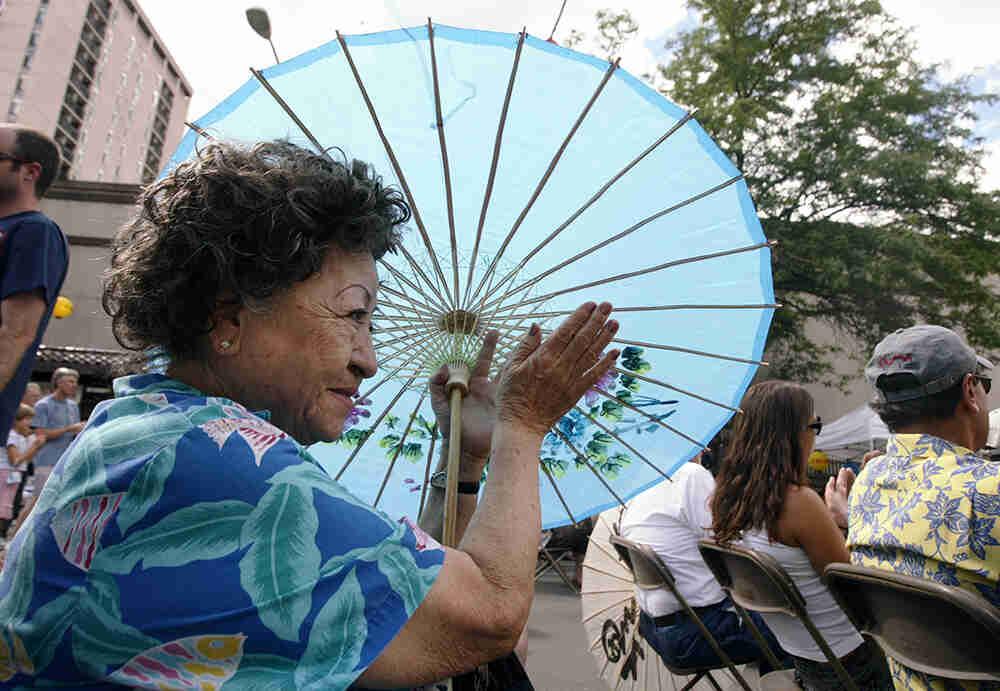Sakura Square
Full Article
Located in the historic heart of Denver’s Japanese community, Sakura Square is bounded by Nineteenth and Twentieth Streets and Larimer and Lawrence Streets in the Lower Downtown district, or LoDo. The square, named for the Japanese word for “cherry blossom,” was built in the early 1970s as part of an improvement project overseen by the neighboring Denver Buddhist Temple. It includes affordable housing, commercial space, and a Japanese garden featuring tributes to important people in Colorado’s Japanese American history. Today, Sakura Square remains a residential and commercial center and offers a quiet retreat in the middle of busy downtown.
Japanese Community in Denver
Established in 1916, the Buddhist Temple in downtown Denver served as the center for the city’s small community of Japanese Americans. The community grew substantially after World War II, from around 800 in 1940 to nearly 5,000 in 1945. In 1942, as Japanese Americans were held in suspicion and forced into federal concentration camps, some 2,000 Japanese Americans relocated to Denver from the West Coast. They hoped to avoid incarceration under Governor Ralph Carr’s proclamation of sanctuary for Japanese, German, and Italian Americans.
After the war, an additional 2,507 Japanese arrived in the city, recently released from camps across the American West, including Colorado’s Amache concentrationcamp. By 1946 there were 258 Japanese businesses in Denver, most of which were on Larimer Street because they were not allowed in other parts of the city.
Building Sakura Square
In 1966 the Denver Urban Renewal Authority (DURA) announced plans to demolish older parts of LoDo, including the present-day Sakura Square block. Even though the city’s Japanese community was shrinking as its members moved back to California or out to the suburbs, it still considered the area around the Buddhist Temple to be important and historically significant. The community had a choice: either allow the city to redevelop the area around the temple, or redevelop it themselves. On March 10, 1971, the Tri-State Buddhist Church purchased the property from DURA for $188,800 and began planning Sakura Square.
The plan for Sakura Square included several parts. The main structure would be a twenty-story apartment building, Tamai Tower, which would include 204 apartments and a community room on the top floor. In addition to residential housing, it would include commercial space on the first two floors. Tamai Tower was to be attached to an additional structure that would house a two-story commercial complex. Between these buildings, a large plaza would feature a Japanese garden. The plaza would contain signs in both English and Japanese.
Sakura Square was built in two years and dedicated in 1973. It featured affordable housing as well as the planned commercial space. The first businesses in Sakura Square included Pacific Mercantile, Granada Supermarket, Sakura Beauty Salon, Nakai’s Gift Shop, Haws and Company, and two restaurants.
The Japanese garden, built by the Japanese Gardeners Association, is the square’s centerpiece. Three memorials stand in the garden, each dedicated to individuals important to Colorado’s Japanese community: a bust of Governor Ralph Carr, who ardently supported Japanese rights during WWII internment; a bust of Minoru Yasui, a Japanese community leader and civil rights activist; and a statue of Yoshitaka Tamai, a Buddhist priest and community leader.
Today
In 2014 Sakura Square converted its residential apartments from affordable housing to market-rate housing. Today, Pacific Mercantile is the only original business remaining; new tenants have moved into the other commercial spaces. The Japanese garden continues to offer a quiet retreat as well as a community gathering space.
The largest event hosted by Sakura Square is the annual Cherry Blossom Festival in June, which draws thousands. The festival celebrates Japanese culture with performances of Japanese drumming, song, dance, and martial arts, as well as the creation of flower arrangements and tree sculptures.
Adapted from Bill Hosokawa, “Sakura Square,” Colorado’s Japanese Americans (Boulder: University Press of Colorado, 2005).






































